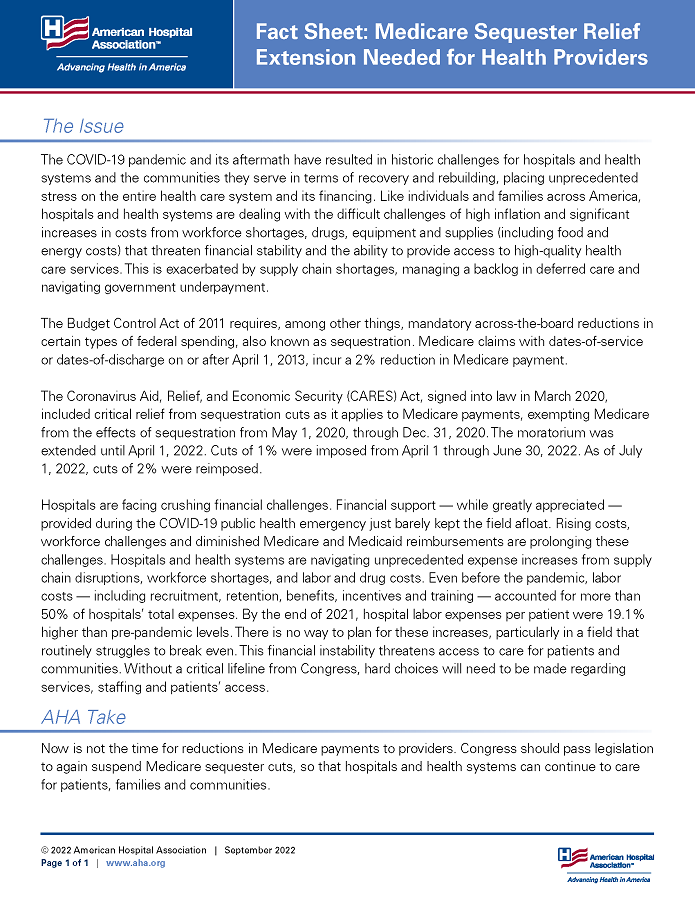

Fact Sheet: Medicare Sequester Relief Extension Needed for Health Providers
The Issue
The COVID-19 pandemic and its aftermath have resulted in historic challenges for hospitals and health systems and the communities they serve in terms of recovery and rebuilding, placing unprecedented stress on the entire health care system and its financing. Like individuals and families across America, hospitals and health systems are dealing with the difficult challenges of high inflation and significant increases in costs from workforce shortages, drugs, equipment and supplies (including food and energy costs) that threaten financial stability and the ability to provide access to high-quality health care services. This is exacerbated by supply chain shortages, managing a backlog in deferred care and navigating government underpayment.
The Budget Control Act of 2011 requires, among other things, mandatory across-the-board reductions in certain types of federal spending, also known as sequestration. Medicare claims with dates-of-service or dates-of-discharge on or after April 1, 2013, incur a 2% reduction in Medicare payment.
The Coronavirus Aid, Relief, and Economic Security (CARES) Act, signed into law in March 2020, included critical relief from sequestration cuts as it applies to Medicare payments, exempting Medicare from the effects of sequestration from May 1, 2020, through Dec. 31, 2020. The moratorium was extended until April 1, 2022. Cuts of 1% were imposed from April 1 through June 30, 2022. As of July 1, 2022, cuts of 2% were reimposed.
Hospitals are facing crushing financial challenges. Financial support — while greatly appreciated — provided during the COVID-19 public health emergency just barely kept the field afloat. Rising costs, workforce challenges and diminished Medicare and Medicaid reimbursements are prolonging these challenges. Hospitals and health systems are navigating unprecedented expense increases from supply chain disruptions, workforce shortages, and labor and drug costs. Even before the pandemic, labor costs — including recruitment, retention, benefits, incentives and training — accounted for more than 50% of hospitals’ total expenses. By the end of 2021, hospital labor expenses per patient were 19.1% higher than pre-pandemic levels. There is no way to plan for these increases, particularly in a field that routinely struggles to break even. This financial instability threatens access to care for patients and communities. Without a critical lifeline from Congress, hard choices will need to be made regarding services, staffing and patients’ access.
AHA Take
Now is not the time for reductions in Medicare payments to providers. Congress should pass legislation to again suspend Medicare sequester cuts, so that hospitals and health systems can continue to care for patients, families and communities.


